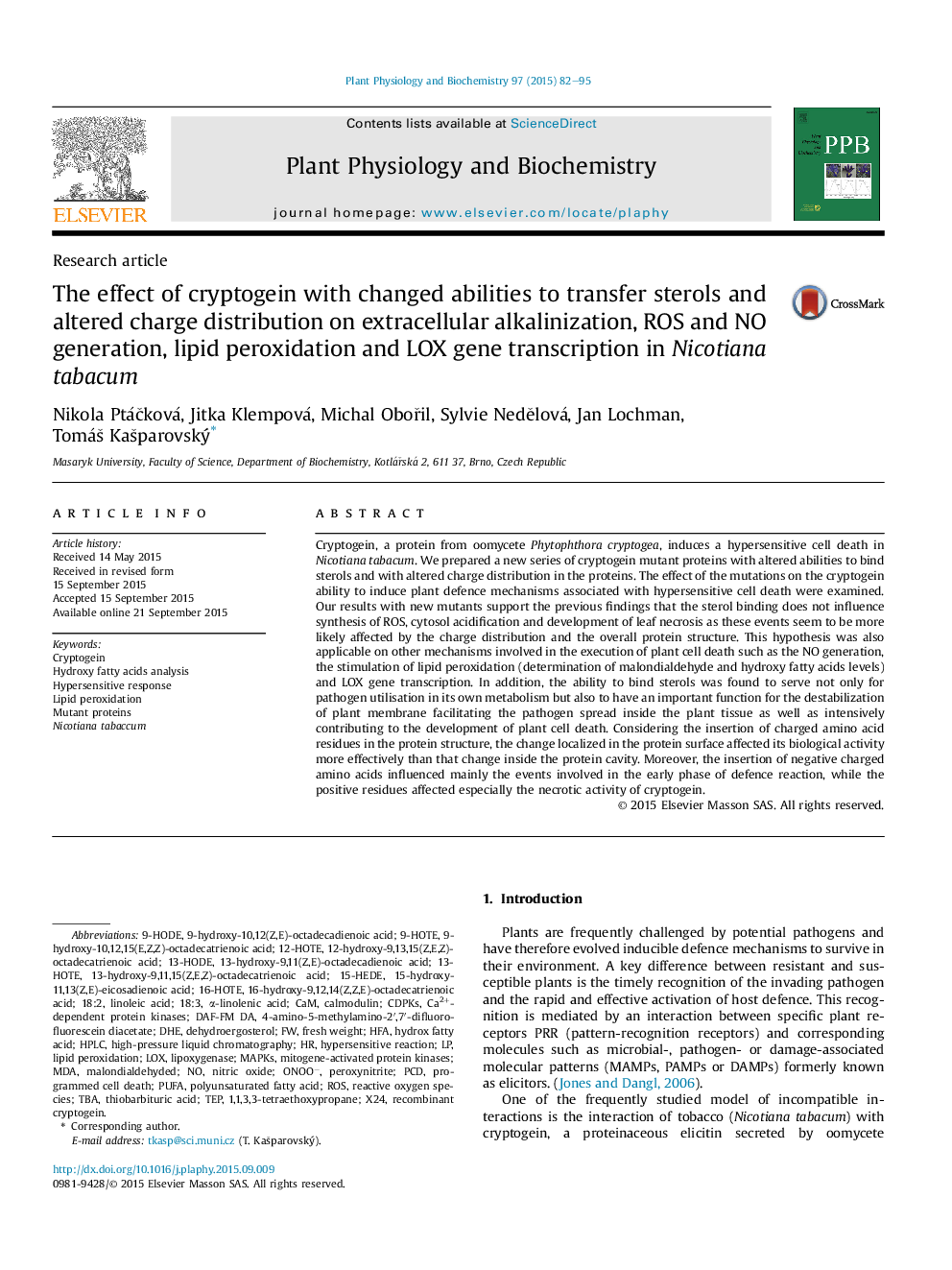| Article ID | Journal | Published Year | Pages | File Type |
|---|---|---|---|---|
| 8354359 | Plant Physiology and Biochemistry | 2015 | 14 Pages |
Abstract
Cryptogein, a protein from oomycete Phytophthora cryptogea, induces a hypersensitive cell death in Nicotiana tabacum. We prepared a new series of cryptogein mutant proteins with altered abilities to bind sterols and with altered charge distribution in the proteins. The effect of the mutations on the cryptogein ability to induce plant defence mechanisms associated with hypersensitive cell death were examined. Our results with new mutants support the previous findings that the sterol binding does not influence synthesis of ROS, cytosol acidification and development of leaf necrosis as these events seem to be more likely affected by the charge distribution and the overall protein structure. This hypothesis was also applicable on other mechanisms involved in the execution of plant cell death such as the NO generation, the stimulation of lipid peroxidation (determination of malondialdehyde and hydroxy fatty acids levels) and LOX gene transcription. In addition, the ability to bind sterols was found to serve not only for pathogen utilisation in its own metabolism but also to have an important function for the destabilization of plant membrane facilitating the pathogen spread inside the plant tissue as well as intensively contributing to the development of plant cell death. Considering the insertion of charged amino acid residues in the protein structure, the change localized in the protein surface affected its biological activity more effectively than that change inside the protein cavity. Moreover, the insertion of negative charged amino acids influenced mainly the events involved in the early phase of defence reaction, while the positive residues affected especially the necrotic activity of cryptogein.
Keywords
Mutant proteins1,1,3,3-tetraethoxypropaneDehydroergosterolNicotiana tabaccumMDACDPKsCa2+-dependent protein kinasesTEPPCDHFADAF-FM DATBA13-HODE18:218:34-Amino-5-Methylamino-2′,7′-Difluorofluorescein Diacetate9-HODEMAPKsONOO−ROSα-linolenic acidThiobarbituric acidLinoleic acidPolyunsaturated fatty acidPUFALOXCAMlipoxygenaseProgrammed cell deathNitric oxideDHEHypersensitive reactionfresh weightHypersensitive responseLipid peroxidationPeroxynitriteCalmodulinhigh-pressure liquid chromatographyHPLCCryptogeinReactive oxygen species
Related Topics
Life Sciences
Agricultural and Biological Sciences
Plant Science
Authors
Nikola PtáÄková, Jitka Klempová, Michal OboÅil, Sylvie NedÄlová, Jan Lochman, TomáÅ¡ KaÅ¡parovský,
